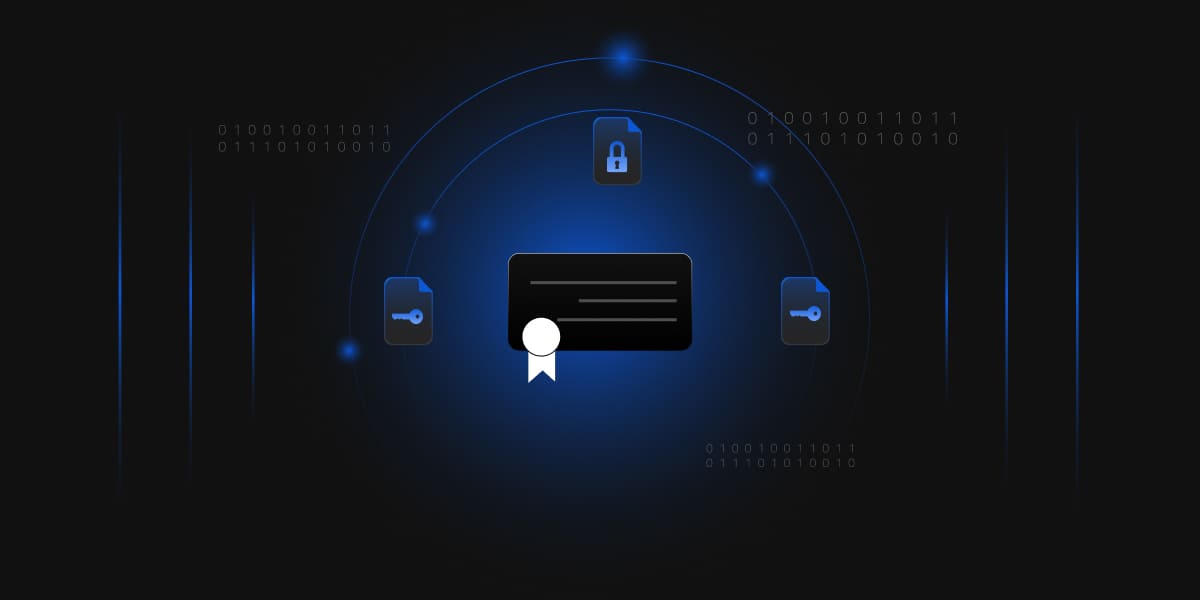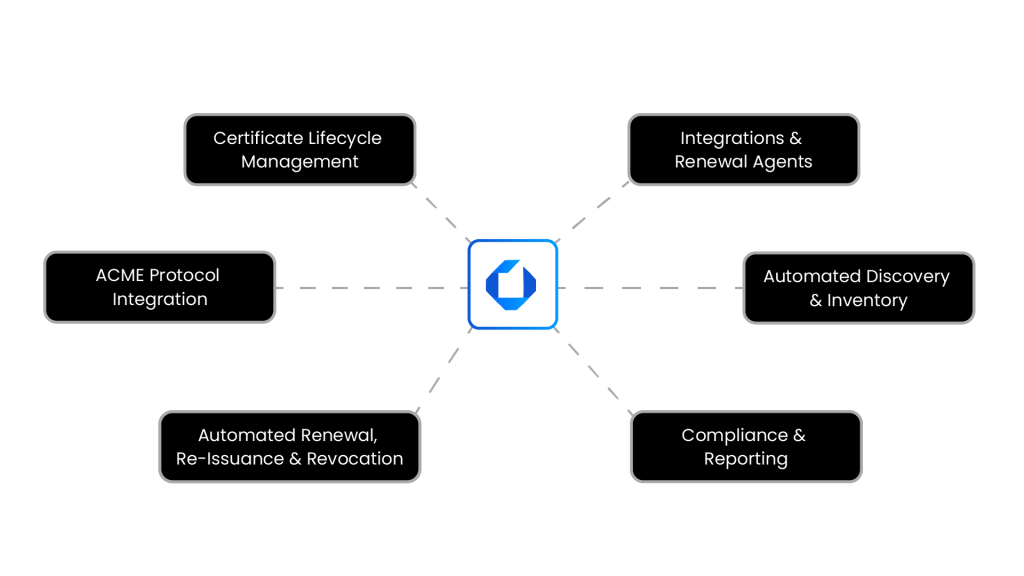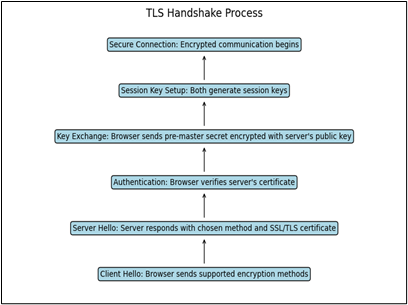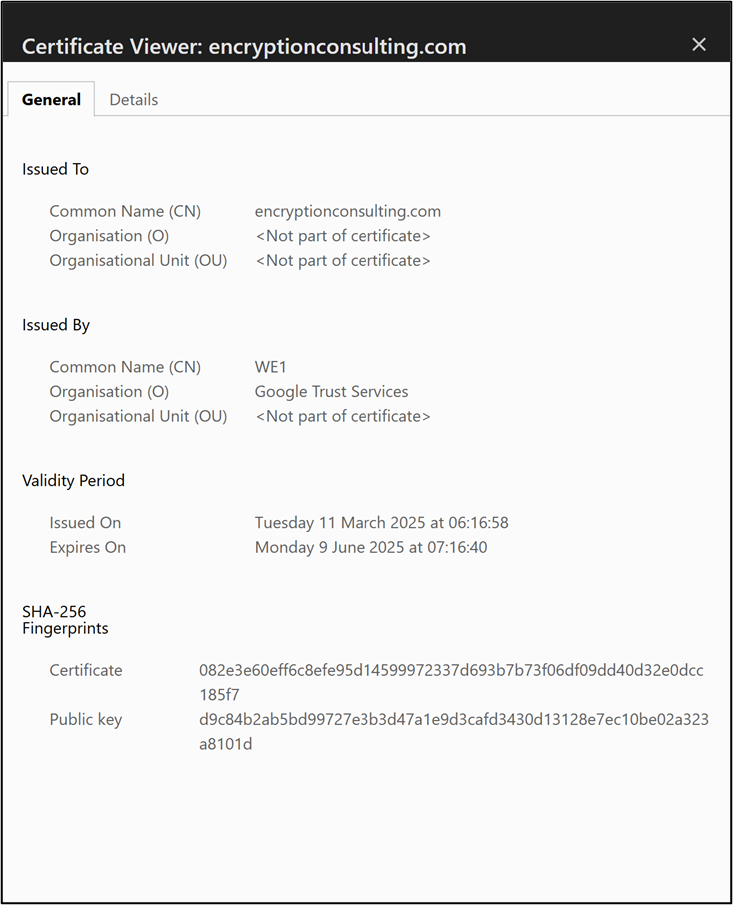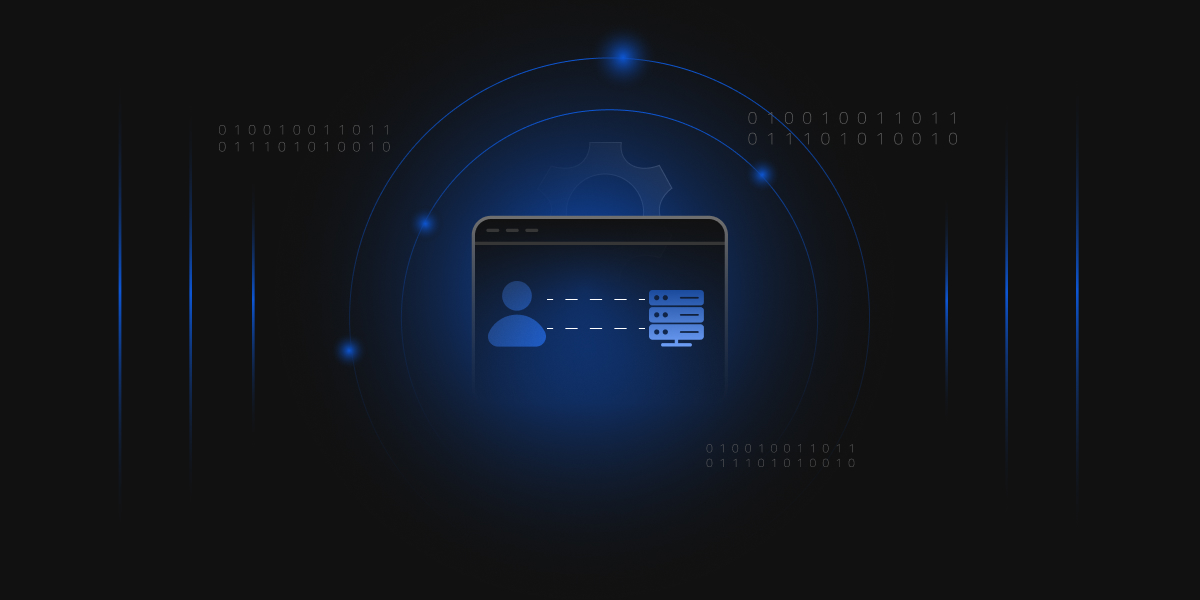Introduction
ML-DSA stands for Module-Lattice Digital Signature Algorithm. It’s a digital signature method designed to stand up against quantum computers, which are expected to break most traditional cryptography in the near future. ML-DSA is built on lattice-based math, specifically, something called module lattices, which are known to be tough problems for both classical and quantum machines to solve.
If you’ve heard of CRYSTALS-Dilithium, ML-DSA is basically its standardized version. It’s now officially recognized by NIST as part of the post-quantum cryptography standards. In simpler terms, ML-DSA lets you sign and verify data (like documents, code, or certificates) in a way that should stay secure even when quantum computers get better.
The problem with current digital signature algorithms, like RSA or ECDSA, is that they rely on math problems that quantum computers can solve quickly. This means that when quantum machines become powerful enough (and they’re getting there), they could forge signatures, impersonate people, or break into systems that were thought to be secure. Post-quantum signature schemes are designed to stay safe even if an attacker has a quantum computer. They don’t rely on factoring large numbers or elliptic curve math.
Instead, they’re based on harder problems that quantum computers can’t easily crack, at least with everything we know today. This shift is all about staying a step ahead and keeping systems secure for the long run.
Back in 2016, NIST kicked off a big project to find and approve cryptographic algorithms that could handle the quantum future. After several rounds of testing, scrutiny, and feedback from the global crypto community, they picked a few algorithms to move forward with. ML-DSA (formerly CRYSTALS-Dilithium) was one of them. In August 2024, NIST published ML-DSA under the name FIPS 204, making it one of the go-to digital signature schemes for the post-quantum era. That makes ML-DSA a solid choice for anyone building new security tools or upgrading old ones so they’re ready for the quantum shift.
Background of ML-DSA
Basics of Digital Signatures
Digital signatures are kind of like handwritten signatures, but for data. When someone signs a document or a piece of code digitally, it proves that the data came from them and hasn’t been tampered with. This is done using a pair of cryptographic keys: one private (kept secret) and one public (shared with others). You sign something with your private key, and others can check it using your public key.
They’re used everywhere for software updates, secure emails, digital certificates, and even in blockchain transactions. Without digital signatures, trust on the internet would basically fall apart.
Limitations of RSA, ECDSA, and Other Classical Schemes
RSA and ECDSA are the usual suspects when it comes to digital signatures today. They’ve been around for a while and are built on mathematical problems that are easy to compute in one direction but hard to reverse, like factoring big numbers (RSA) or solving elliptic curve equations (ECDSA).
The problem? These systems were designed with regular computers in mind. Their security depends on certain problems being time-consuming to solve with classical methods. But when quantum computers get stronger, the math behind RSA and ECDSA becomes easy to break, meaning someone could forge signatures or decrypt things they shouldn’t be able to.
Another issue is size and speed. RSA keys and signatures can get bulky, which isn’t great for systems with limited storage or bandwidth. ECDSA is smaller and faster, but still breaks down in the face of a quantum attacker.
Brief on Quantum Threats to Digital Signatures
Quantum computers don’t just make things faster; they change the game. Algorithms like Shor’s make it possible to break RSA and ECDSA in a reasonable amount of time. That means if someone stores your signed data today and gets access to a quantum computer tomorrow, they could forge your signature and pretend it came from you.
Even though we don’t have huge, stable quantum computers yet, the concern is real enough that security agencies are already pushing for alternatives. The idea is to switch to new digital signature methods that can hold up when quantum tech becomes practical.
Overview of Lattice-Based Cryptography
Lattice-based cryptography is one of the most promising replacements. Instead of relying on number factoring or curve math, it’s based on geometric shapes made up of grid-like points in space, called lattices.
The tricky problem here is finding the shortest or closest vector in one of these lattices. Sounds simple, but it turns out to be really hard, even for quantum computers. That’s what makes it a strong foundation for post-quantum cryptography.
ML-DSA uses a specific type of lattice structure called module lattices, which gives a good balance between speed, size, and security. It’s not just theoretical lattice-based methods that have been tested for years and are now being built into standards and real-world systems.
ML-DSA Overview
Origins: CRYSTALS-Dilithium to ML-DSA
ML-DSA didn’t appear out of thin air. It’s actually the official version of CRYSTALS-Dilithium, which was a front-runner in NIST’s post-quantum cryptography project. Researchers built Dilithium using lattice-based math, and it stood up well through years of analysis and public testing.
After several rounds of evaluations, tweaks, and feedback, NIST finalized the design and renamed it ML-DSA (short for Module-Lattice Digital Signature Algorithm). This version was published as FIPS 204 in 2024. So, when people talk about ML-DSA, they’re basically referring to a polished, standardized version of Dilithium with the same core design.
Key Characteristics of ML-DSA
ML-DSA stands out for a few reasons:
- Post-quantum secure: It’s built to handle attacks from both classical and quantum computers.
- Fast signing and verification: Performance is solid, better than some other post-quantum options that are secure but slow.
- Reasonable key and signature sizes: Not tiny, but much more manageable compared to older quantum-safe schemes like SPHINCS+.
- Simple design: Uses integer arithmetic (no floating point), which makes implementation easier and helps avoid bugs or leaks.
- Based on lattices: Specifically, module lattices, which are harder to attack than basic ones, but more efficient than full-blown ring lattices.
Put simply, ML-DSA gets the job done without being overly complex or heavy.
Security Goals and Design Rationale
ML-DSA was designed with a few things in mind:
- Quantum resistance: First and foremost, it needs to stay secure even if an attacker has a quantum computer.
- No fancy tricks: Some cryptographic schemes rely on complex structures or algorithms that are tough to implement safely. ML-DSA sticks to simpler tools like hash functions, modular arithmetic, and structured randomness.
- Side-channel awareness: It avoids operations (like floating point math or branching based on secret data) that can leak sensitive information through timing or power usage.
- Wide usability: The idea is for it to work across many platforms like laptops, servers, embedded devices, and so on, without needing customer hardware.
All of these choices were made to strike a balance, something strong enough to survive the quantum shift, but still practical to roll out in real systems.
ML-DSA Algorithm Structure
Key Generation
Key generation in ML-DSA is pretty straightforward once you understand the basics of lattice math. The idea is to generate a public key and a private key that match up in a way that only the private key can create valid signatures.
Behind the scenes, it uses randomly chosen polynomials and some noise (yes, randomness plays a big role here) to build a small linear equation. Your private key is made up of secret values that fit the equation, and your public key is what someone would get if they only saw the final result without knowing the inputs. Because it’s built on hard lattice problems, reversing the process (from public key back to private key) isn’t doable, even with a quantum computer.
Signature Generation
Signing a message with ML-DSA involves a few steps:
- You take your message and hash it together with your public key and a fresh bit of randomness.
- This gives you a challenge value.
- Then, you use your secret key and this challenge to build a short lattice vector that forms your signature.
- To make sure everything stays secure and doesn’t leak information, the signature gets checked against certain size limits. If it doesn’t pass, it tries again with new randomness.
This retry step is important as it helps the algorithm avoid leaking any hints about the private key.
Signature Verification
Verifying a signature is where the public key comes into play. You hash the message again (along with parts of the signature) and check if the results line up with what’s expected based on the public key.
You’re basically checking: “Would this signature have come out of the system if the person signing had the correct private key?”
If it passes the test, the signature is valid. If not, it’s rejected. It’s fast and doesn’t need any private info, so it can be used anywhere, browsers, servers, embedded devices, etc.
Use of Modules and Lattices
The “ML” in ML-DSA stands for Module Lattice, which is a slightly optimized version of the general lattice structure. A lattice, in simple terms, is a grid of points in space created by linear combinations of vectors.
Module lattices give you stronger security than plain lattices, but with less of a hit on performance. They also allow for more compact key and signature sizes without making the math too complicated. Think of it as a smart trade-off between speed, size, and safety.
Role of SHAKE-128 and SHAKE-256 (XOFs)
ML-DSA leans heavily on SHAKE-128 and SHAKE-256, which are two extendable-output functions (XOFs). Unlike regular hash functions that give a fixed-size output, XOFs can be stretched to whatever length you need.
In ML-DSA, these are used for:
- Creating challenge values during signing.
- Hashing messages.
- Deriving randomness.
- Generating public parameters.
They help keep the algorithm consistent and secure without needing lots of different hashing tools. Plus, they’re efficient, which keeps performance in check.
ML-DSA Security Levels
ML-DSA comes in three levels – ML-DSA 44, ML-DSA 65, and ML-DSA 87. Each one targets a different NIST security level, which basically means how much an attacker would need to break it, even with a quantum computer. The higher the level, the stronger the protection, but it also means bigger keys and slower performance.
Let’s break them down:
ML-DSA 44 (NIST Level 2)
This is the lightest version of the three and is meant for systems that need good security but don’t want to carry too much overhead. Think IoT devices or embedded systems that have limited memory or processing power.
- Public key size: ~1.3 KB
- Private key size: ~2.8 KB
- Signature Size: ~2.4 KB
- Speed: Fastest among the three.
It’s a solid choice when you want post-quantum protection but need to keep things small and snappy.
ML-DSA 65 (NIST Level 3)
This version bumps up the security to NIST Level 3. It’s a middle ground option that is still fairly compact, but with stronger defences.
- Public key size: ~1.9 KB
- Private key size: ~4.0 KB
- Signature size: ~3.3 KB
- Speed: A little slower than ML-DSA 44, but still quite practical.
If you’re building something that needs a higher level of assurance, like financial applications or public sector software, then this might be the sweet spot.
ML-DSA 87 (NIST Level 5)
This is the strongest option, designed for high-security use cases like government systems, critical infrastructure, or long-term protection of sensitive data.
- Public key size: ~2.6 KB
- Private key size: ~5.4 KB
- Signature size: ~4.6 KB
- Speed: Slower than the other two, but still usable.
It’s heavier, but it’s still built for scenarios where breaking the signature scheme just isn’t an option.
Trade-offs: Signature size, Key size, Performance
Here’s the deal — stronger security means bigger keys and signatures. That’s just how the math works.
- Signature size grows as you move up the levels, which could be a concern for low-bandwidth networks.
- Key size also increases, which affects how much memory you need to store them.
- Performance takes a hit as security increases, especially during signature generation, though verification is usually quick.
So, depending on your needs —speed, storage, or strength —you can select the right version of ML-DSA that suits your case. It’s not about “one-size-fits-all”, but more like picking the right tool for the job.
Performance and Benchmarks
Speed of Key generation, Sign operation, and Verify operation
Performance-wise, ML-DSA holds up pretty well, especially when compared to other post-quantum options.
- Key Generation: Very quick. It’s basically some fast lattice math and a bit of hashing.
- Signing: Slightly slower than key generation, because it sometimes has to retry the process to meet size limits, but still efficient overall.
- Verification: Usually the fastest of the three. It’s lightweight and doesn’t need private keys, so it works well on the verifier’s side.
In general, verification is faster than signing, and both are fast enough for everyday use. Even on resource-limited systems, the delays are barely noticeable.
Here’s an approximate idea (using software-only implementations):
| Operation | ML-DSA 44 | ML-DSA 65 | ML-DSA 87 |
|---|---|---|---|
| Key Generation | ~0.15 ms | ~0.22 ms | ~0.33 ms |
| Sign | ~0.35 ms | ~0.45 ms | ~0.65 ms |
| Verify | ~0.08 ms | ~0.12 ms | ~0.19 ms |
Resource Usage (CPU, RAM, Hardware Acceleration)
ML-DSA is pretty friendly when it comes to resource usage:
- CPU: Runs well on general-purpose CPUs, no need for special instructions or hardware. It’s optimized for integer operations, which helps keep things clean and predictable.
- RAM: You don’t need a lot. Even the largest variant (ML-DSA 87) can fit comfortably into most modern systems, including microcontrollers with moderate memory.
- Hardware Acceleration: It doesn’t require any, but if you have SHA-3 acceleration (like from some ARM or Intel processors), that helps speed up hashing tasks like SHAKE-128/256. But again, not a must-have.
Overall, ML-DSA strikes a good balance; it’s secure enough for post-quantum use, but it won’t kill your battery or max out your CPU. That makes it pretty usable across laptops, servers, and even some IoT devices.
ML-DSA Integration Scenarios
Integration in PKI Environments
If you’re working with Public Key Infrastructure (PKI), ML-DSA can slide in where digital signatures are needed, like for certificates, CRLs, OCSP responses, or code signing.
You’d basically swap out your current signing algorithm (like RSA or ECDSA) with ML-DSA while keeping the rest of your PKI setup mostly the same. Certificate Authorities (CAs) would need to support the new signature algorithm, and clients would need to understand it, but the core process stays familiar: generate key pair → sign with private key → verify with public key.
Support for ML-DSA in X.509 certificates is something being worked on as part of post-quantum standardization, so it’s not plug-and-play just yet, but the pieces are falling into place.
Signing Software and Firmware
Software and firmware updates are prime targets for attackers, so digital signatures are critical here. ML-DSA can be used to sign update packages in a way that holds up against quantum attacks.
The larger signature size might mean tweaking how things are stored or transmitted (especially for over-the-air updates), but it’s totally doable. For vendors who plan to support devices 10–15 years into the future, adding post-quantum signatures like ML-DSA is a good move.
And unlike some post-quantum schemes that are really slow or massive in size, ML-DSA keeps things relatively practical.
ML-DSA in Cryptographic Message Syntax (CMS)
CMS (Cryptographic Message Syntax) is used in stuff like S/MIME, time-stamping, and digital document signing. ML-DSA can be added to CMS by defining new algorithm identifiers and encoding rules.
Once that’s in place, you can use ML-DSA to sign emails, documents, or pretty much any kind of digital message just like you’d do with RSA or ECDSA today. It’s all about making sure the software that parses and validates these CMS structures knows what to do with an ML-DSA signature.
So, if you’re working on a standard or product that uses CMS, adding ML-DSA is mostly about updating support for the new algorithm and handling the bigger key and signature sizes.
Use in Smart Cards and HSMs
Using ML-DSA in smart cards and HSMs (Hardware Security Modules) is one of the more interesting integration paths. These are places where private keys need to stay locked down, and operations must be quick and efficient.
ML-DSA’s relatively small key sizes (compared to other PQC schemes) make it easier to fit into the limited storage space of a smart card. And since signing is fast enough, ML-DSA could realistically work within the speed limits of contactless or embedded secure elements.
For HSMs, the bigger challenge is updating firmware to support lattice math and SHAKE functions. But once that’s handled, ML-DSA can be treated just like any other signing algorithm: load the key, perform the operation, and return the signature.
Comparison with Other PQ Signature Algorithms
ML-DSA isn’t the only post-quantum signature scheme out there. Two other big names in the game are FALCON and SPHINCS+. Each has its own trade-offs, quirks, and sweet spots. Let’s break them down.
ML-DSA vs FALCON
FALCON is also lattice-based like ML-DSA, but it uses a different math trick called NTRU lattices and relies on floating-point arithmetic, yep, the kind you see in your calculator.
- ML-DSA is easier to implement safely. FALCON needs very careful handling of floating-point rounding, which can be tricky to get right. One mistake and you might lose your keys.
- FALCON has smaller signatures (around 666 bytes for Level 1), which is great for bandwidth-constrained use cases.
- But ML-DSA has smaller public keys and a more straightforward structure that’s easier to audit and test.
In short, FALCON is great for compact signatures if you’ve got a safe and precise implementation. ML-DSA is friendlier to developers and less risky on the side-channel front.
ML-DSA vs SPHINCS+
SPHINCS+ is a whole different story. It’s not based on lattices, it’s based on hash functions, which are about as well-understood and simple as cryptographic tools get.
- SPHINCS+ is stateless, which is nice from a key management angle.
- But its signature sizes are huge, we’re talking 8 KB or more. That can be a pain for low-memory devices or systems with strict transmission limits.
- ML-DSA wins on speed, especially for signature generation. SPHINCS+ is known for being slow, which limits its use in high-throughput environments.
SPHINCS+ is often the “safe fallback” because of its conservative design. But ML-DSA offers a much more balanced trade-off for most practical applications.
Key Metrics Comparison Table
Here’s a quick side-by-side look:
| Metric | ML-DSA 44 (L2) | FALCON 512 (L1) | SPHINCS+ 128s(L1) |
|---|---|---|---|
| Public Key Size | ~1.3 KB | ~0.9 KB | ~32 bytes |
| Private Key Size | ~2.8 KB | ~1.3 KB | ~64 bytes |
| Signature Size | ~2.4 KB | ~666 bytes | ~8 KB |
| Key generation speed | Fast | Fast | Slow |
| Sign speed | Fast | Medium | Very Slow |
| Verify speed | Very Fast | Fast | Medium |
| Security Basis | Lattices | Lattices | Hash-based |
| Ease of Use | Simple | Tricky (floating-point) | Simple but large |
In summary:
- Use ML-DSA when you want a good balance of size, speed, and simplicity.
- Use FALCON if you absolutely need tiny signatures and can afford the care needed in implementation.
- Use SPHINCS+ if size and speed aren’t your biggest problems, and you want the most conservative design.
Standardization and Compliance
NIST FIPS 204 Details
ML-DSA has been officially standardized by NIST under FIPS 204. This is a pretty big deal; it means ML-DSA is now part of the U.S. government’s approved list of digital signature algorithms built to handle the quantum threat.
FIPS 204 lays out the details of the algorithm, including:
- How keys are generated
- How signatures are created and verified
- Acceptable parameters for each security level (ML-DSA 44, 65, 87)
It also defines test vectors and formats to ensure implementations behave consistently. If you’re building or validating software that uses ML-DSA, FIPS 204 is the go-to spec.
In short, FIPS 204 is the official recipe book for ML-DSA.
Migration Timelines and Recommendations
The clock is ticking on quantum readiness. NIST has made it clear: by the early 2030s, cryptographic systems should be post-quantum secure.
While that might sound far off, building and rolling out changes, especially in big, slow-moving environments like government, finance, or healthcare, takes years. That’s why 2025–2027 is the soft starting point for planning and pilot deployments.
Here’s the general recommendation:
- 2025–2026: Start testing post-quantum algorithms (like ML-DSA) in dev or hybrid systems.
- 2027–2029: Start deploying in production systems, especially for anything long-term (think signed firmware, digital IDs, or e-voting).
- 2030+: All new cryptographic deployments should be quantum-safe by default.
Basically, don’t wait until 2029 to panic.
US Federal Mandates (2030-2035 Transition Guidance)
The US government, through the Office of Management and Budget (OMB) and NSA’s CNSA 2.0 guidelines, has laid out a clear post-quantum transition plan.
Key points:
- By 2025, agencies must identify all systems using public-key cryptography and rank them by priority.
- By 2027, high-priority systems (like national security, infrastructure, or high-value data) should have started transitioning to NIST-approved post-quantum algorithms.
- Between 2030 and 2035, all federal systems must fully switch to quantum-safe cryptography.
ML-DSA fits directly into this timeline as a signature scheme approved for use under these future mandates. So, if you’re working with or selling to federal agencies or even large enterprises that follow federal guidance, ML-DSA is something you’ll want to bake into your crypto roadmap.
How can Encryption Consulting help?
Getting started with post-quantum signatures can feel like a lot of new algorithms, key sizes, integration headaches, and compliance concerns. That’s where we come in.
At EC, we’ve built tools that make using ML-DSA straightforward. Our CodeSign Secure platform supports ML-DSA out of the box, along with other NIST-approved algorithms. Whether you’re signing software, firmware, documents, or certificates, we handle the technical details, so you don’t have to.
Here’s what we offer:
- ML-DSA support in our signing workflows
- Automation hooks for CI/CD tools
- Options for secure key storage
- Compliance-friendly audit trails
If your team is looking to test or roll out post-quantum signatures without building everything from scratch, we’re happy to help. You can start small, try things out, and grow from there.
Conclusion
ML-DSA isn’t just another post-quantum signature algorithm; it’s one of the front-runners, officially backed by NIST and designed to handle real-world use cases without making things overly complicated. It’s fast enough for high-volume signing, fits into existing systems like PKI and CMS, and avoids some of the trickier math pitfalls seen in alternatives like FALCON.
If you’re thinking about future-proofing your digital signatures, whether it’s for code, firmware, documents, or secure communications, ML-DSA is worth serious consideration.
And if you want a smooth way to get started, our code signing tool, CodeSign Secure, has built-in support for ML-DSA. It takes care of the key handling, signing process, and integration bits, so you can focus on what matters: shipping secure, quantum-ready software without headaches.
Check it out if you’re ready to sign smarter and stay ahead of the curve.




